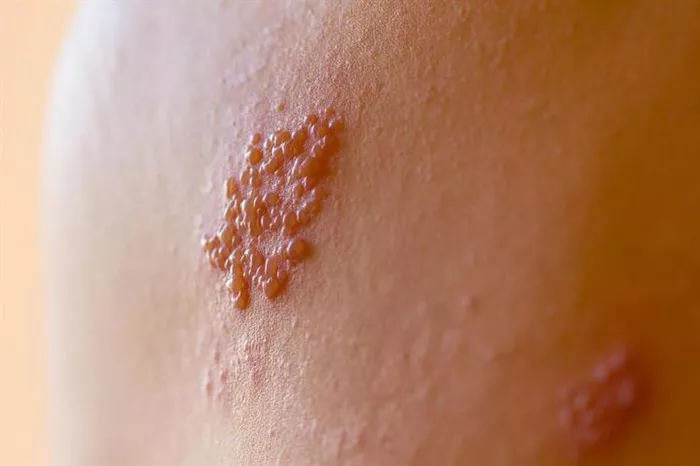Vitiligo is a chronic skin condition characterized by the loss of pigment, resulting in white patches on the skin. Affecting 0.5-2% of the global population, it can have significant psychological and social impacts on those affected. The condition occurs when melanocytes, the cells responsible for producing skin pigment, are destroyed. The exact cause of this destruction is not completely understood, but it is believed to involve a combination of genetic, autoimmune, and environmental factors.
Understanding Vitiligo
Vitiligo is classified into two main types: segmental and non-segmental. Non-segmental vitiligo, also known as generalized vitiligo, is the most common form, characterized by symmetrical patches appearing on both sides of the body. Segmental vitiligo is less common and tends to affect only one side of the body.
Causes and Risk Factors
The exact cause of vitiligo is still unknown, but several theories suggest that it may result from a combination of genetic, environmental, and autoimmune factors:
1. Genetic Factors: Studies have shown that vitiligo can run in families, suggesting a genetic predisposition. Specific genes associated with the immune system, such as NLRP1 and PTPN22, have been implicated in the development of vitiligo.
2. Autoimmune Hypothesis: The autoimmune hypothesis posits that the immune system mistakenly attacks melanocytes, leading to their destruction. This theory is supported by the presence of autoantibodies against melanocytes in some patients with vitiligo.
3. Environmental Triggers: Certain environmental factors, such as exposure to chemicals, sunburn, or stress, may trigger or exacerbate vitiligo in genetically susceptible individuals.
Early Detection and Diagnosis
Early detection of vitiligo is crucial for effective management and treatment. Recognizing the initial signs and symptoms can help individuals seek medical attention promptly. The following are common early indicators of vitiligo:
1. Depigmented Patches: The hallmark sign of vitiligo is the appearance of white, depigmented patches on the skin. These patches are usually well-defined and can appear anywhere on the body, although they commonly occur on sun-exposed areas, such as the face, hands, and arms.
2. Hair Color Changes: In addition to skin changes, vitiligo can affect hair, causing premature graying or whitening of the hair on the scalp, eyebrows, eyelashes, or beard.
3. Mucous Membranes: Depigmentation can also occur in the mucous membranes, such as the lips and inside the mouth.
4. Rapid Progression: In some cases, vitiligo may spread rapidly over a short period, highlighting the importance of early intervention.
Can We Stop Vitiligo at an Early Stage?
Stopping vitiligo at an early stage is a challenging but crucial goal. Early intervention can help stabilize the condition, prevent further depigmentation, and, in some cases, even repigment affected areas. Several treatment options are available to manage vitiligo, including topical medications, phototherapy, and surgical interventions. The choice of treatment depends on various factors, including the extent and location of the patches, the patient’s age, and the progression of the disease.
Topical Treatments
Topical treatments are often the first line of defense for patients with vitiligo. These treatments are applied directly to the skin and can help slow the progression of the disease and promote repigmentation.
1. Corticosteroids: Topical corticosteroids are commonly prescribed to reduce inflammation and suppress the immune response. They can be effective in early-stage vitiligo, particularly for small, localized patches. However, long-term use of corticosteroids can lead to side effects, such as skin thinning and stretch marks.
2. Calcineurin Inhibitors: Calcineurin inhibitors, such as tacrolimus and pimecrolimus, are alternative treatments that modulate the immune response without the side effects associated with corticosteroids. These medications are particularly useful for sensitive areas, such as the face and genitals.
3. Topical Vitamin D Analogues: Topical vitamin D analogues, like calcipotriol, have been shown to have some efficacy in treating vitiligo. They work by regulating the immune system and promoting the growth of melanocytes.
Phototherapy
Phototherapy, or light therapy, is another effective treatment option for vitiligo. It involves exposing the skin to specific wavelengths of ultraviolet (UV) light to stimulate melanocyte activity and promote repigmentation.
1. Narrowband UVB (NB-UVB): Narrowband UVB is considered the gold standard for vitiligo treatment. It has been shown to be effective in stabilizing the condition and inducing repigmentation in many patients. Treatment typically involves two to three sessions per week over several months.
SEE ALSO: Is Vitiligo from Birth
2. Excimer Laser: The excimer laser delivers targeted UVB light to affected areas, minimizing exposure to healthy skin. This treatment is particularly useful for small, localized patches and has shown promising results in early-stage vitiligo.
3. PUVA Therapy: PUVA therapy combines psoralen (a photosensitizing medication) with UVA light exposure. While effective, PUVA therapy is less commonly used due to its potential side effects, such as nausea and an increased risk of skin cancer with prolonged use.
Surgical Treatments
In cases where other treatments have not been successful, surgical interventions may be considered. These procedures aim to restore pigmentation by transplanting melanocytes or skin grafts to affected areas.
1. Melanocyte Transplantation: This procedure involves harvesting melanocytes from healthy skin areas and transplanting them to depigmented patches. Melanocyte transplantation can be effective for stable vitiligo and has shown promising results in restoring pigmentation.
2. Skin Grafting: Skin grafting involves transplanting small sections of healthy, pigmented skin to depigmented areas. This procedure is typically reserved for patients with stable, localized vitiligo and can provide good cosmetic results.
Emerging Therapies and Research
Research into vitiligo is ongoing, and several emerging therapies show promise in stopping the progression of the disease and promoting repigmentation. These novel treatments aim to target the underlying mechanisms of vitiligo and offer new hope for patients.
Janus Kinase (JAK) Inhibitors
Janus kinase inhibitors, such as tofacitinib and ruxolitinib, have shown potential in treating vitiligo by modulating the immune response. These medications work by inhibiting specific pathways involved in the autoimmune destruction of melanocytes. Clinical trials have demonstrated encouraging results, with some patients experiencing significant repigmentation.
Antioxidant Therapy
Oxidative stress is believed to play a role in the development of vitiligo. Antioxidant therapy aims to reduce oxidative damage and support melanocyte survival. Various antioxidants, such as vitamin C, vitamin E, and polypodium leucotomos extract, are being investigated for their potential benefits in vitiligo management.
Melanocyte-Stimulating Agents
Melanocyte-stimulating agents, such as afamelanotide, are designed to stimulate melanocyte activity and promote repigmentation. Afamelanotide, a synthetic analog of alpha-melanocyte-stimulating hormone, has shown promise in clinical trials, particularly when combined with phototherapy.
Gene Therapy
Gene therapy is an exciting area of research that holds the potential to correct genetic defects associated with vitiligo. By targeting specific genes involved in melanocyte function and immune regulation, gene therapy could offer a long-term solution for vitiligo patients. Although still in its early stages, this approach represents a significant advancement in vitiligo treatment.
Psychological and Social Support
The psychological and social impact of vitiligo can be profound, affecting self-esteem, body image, and overall quality of life. Early intervention should not only focus on medical treatment but also on providing psychological and social support to patients.
Counseling and Support Groups
Counseling and support groups can play a crucial role in helping individuals cope with the emotional challenges of vitiligo. Professional counseling can provide strategies for managing stress, anxiety, and depression associated with the condition. Support groups offer a sense of community and understanding, allowing patients to share their experiences and learn from others facing similar challenges.
Education and Awareness
Increasing public awareness and education about vitiligo can help reduce stigma and promote acceptance. Educational campaigns can provide accurate information about the condition, dispel myths, and encourage empathy and support for those affected by vitiligo.
Conclusion
Stopping vitiligo at an early stage is a complex and multifaceted challenge. While there is currently no cure for vitiligo, early intervention with appropriate treatments can help stabilize the condition, prevent further depigmentation, and, in some cases, promote repigmentation. Advances in research and emerging therapies offer hope for more effective treatments in the future.
A comprehensive approach to vitiligo management should include medical treatments, psychological support, and efforts to raise awareness and reduce stigma. By addressing the physical, emotional, and social aspects of the condition, we can improve the quality of life for individuals living with vitiligo and move closer to the goal of stopping vitiligo at its early stages.
Related Topics:

























